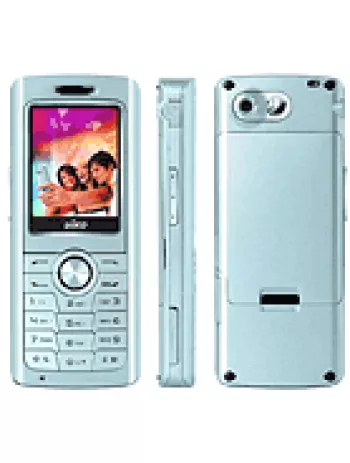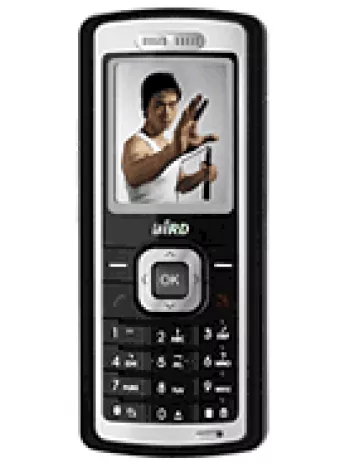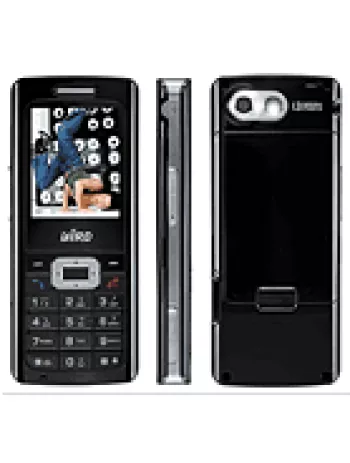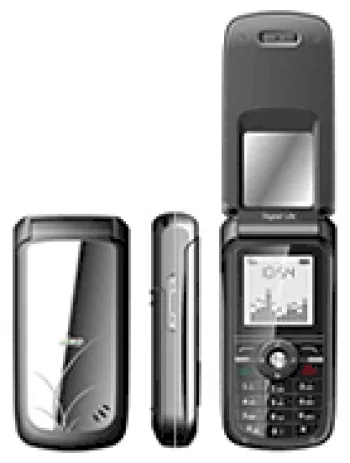
Overview of the Bird D612
The Bird D612 is a feature phone that was released in 2007, targeting users who needed a simple, reliable communication device without the complexities of a modern smartphone. This device, despite being discontinued, is remembered for its compact form factor and basic but functional features ideal for its time.
Design and Build
The Bird D612 boasts a straightforward design with dimensions of 105.5 x 44 x 12.2 mm and a weight of 71.4 grams, making it portable and easy to hold. It features a Mini-SIM slot and comes in two color options, blue and silver, which provided users with a bit of personal choice.
Display
Featuring a 1.8-inch TFT display with 65K colors, the screen of the Bird D612 offered a resolution of 128 x 160 pixels. Although it may seem modest by today's standards, the display was quite acceptable for tasks such as messaging and simple navigation through the phone's menu. The screen's ~114 ppi density made text and basic icons clearly visible.
Camera
The Bird D612 is equipped with a VGA main camera, which at 0.3MP, was primarily used for capturing quick photos rather than high-quality images. The camera's functionality was basic but useful for the casual snapshot. Video capability was present, although relatively limited in quality and length, suitable for simple personal uses.
Battery Life
The phone comes with a removable Li-Ion 650 mAh battery, providing a decent battery life for its category. Users could expect up to 140 hours of standby time and up to 4 hours of talk time, making it adequate for daily communications without the need for frequent recharges.
Network and Connectivity
This model operated on GSM technology, supporting 2G bands GSM 900 and 1800. It offered GPRS class 12 for basic internet connectivity, although it lacked EDGE support. Notably, the device did not include advanced connectivity options such as WLAN, Bluetooth, or positioning services. It also lacked an FM radio. The USB connection was proprietary, limiting compatibility with standard USB cables and accessories.
Memory and Storage
The Bird D612 included a dedicated microSD card slot, providing storage flexibility for users needing additional memory for contacts and messages. The phone supported a comprehensive phonebook and tracked call records for dialed, received, and missed calls, up to 20 entries for each category.
Audio
Audio output came through a loudspeaker, and the phone supported various alert types, including vibration and downloadable polyphonic and MP3 ringtones. However, the absence of a 3.5mm audio jack limited personal music listening options, reflecting its focus on basic phone functions rather than multimedia.
Software Features
Operating on a traditional feature phone platform, the Bird D612 provided essential communications tools such as SMS, EMS, and MMS for messaging. It included a WAP 2.0 browser, although the browsing experience was extremely basic and suited primarily for text-based content. Java support, specifically MIDP 2.0, allowed for some degree of application flexibility, primarily for games, which were modestly available on the device.
Market Position and Conclusion
At the time of its release, the Bird D612 was positioned as an affordable and practical solution for users needing a no-frills mobile device. Its straightforward design, reliable performance for calls and messages, and essential feature set made it a popular choice for consumers who prioritized simplicity. While its functionality is limited in modern terms, it represented a balance of form and function for users not requiring the extensive features available in today’s smartphones.
Key Features of Bird D612
- Lightweight design, weighing only 71.4 g (2.50 oz)
- Compact dimensions for easy handling: 105.5 x 44 x 12.2 mm (4.15 x 1.73 x 0.48 in)
- TFT display with 65K colors
- MicroSD card slot for expandable storage
- VGA main camera with video recording capabilities
- Support for SMS, EMS, and MMS messaging
- Java support (MIDP 2.0) for additional applications and games
- Removable Li-Ion 650 mAh battery with up to 140 hours standby time
Disadvantages of Bird D612
- Lacks 3G, 4G, and 5G network support; only supports GSM technology with 2G bands.
- Discontinued status makes it challenging to find new devices or official support.
- Small display size of 1.8 inches with a low resolution of 128 x 160 pixels.
- No EDGE support for faster data transfer in 2G networks.
- Limited internal storage, requiring reliance on a microSD card for additional space.
- VGA main camera with limited image quality for photography.
- Absence of a selfie camera for video calls and selfies.
- No Bluetooth or WLAN technology for wireless connectivity.
- Lacks GPS functionality for navigation purposes.
- No radio feature or standard 3.5mm audio jack for headphones.
- Uses a proprietary USB connection instead of a standard type, limiting charger compatibility.
- Small battery capacity of 650 mAh, which may result in shorter standby and usage times.
View Also
More Phones
All Rights Reserved +14267 Phones © Mobilawy 2025
























